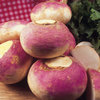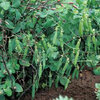Product Categories Vegetable Seeds D-P Parsnips Parsnip Guernsey Heirloom Vegetable Seeds
Parsnip Guernsey Heirloom Vegetable Seeds
Product no.: SEEDV080
In stock
Delivery period: 1 working days
We also recommend
|
Customers who bought this item also bought:
|
You may want to also consider this item:
|
Other items you may also want to consider:
|
* Prices plus VAT, plus delivery
Customers who bought this product also bought
|
Carrot Rainbow Blend 400 Vegetable Seeds
from
£0.97
*
|
|
Radish Cherry Belle Vegetable/Fruit Seeds
from
£0.82
*
|
|
Pea Meteor Pisum Sativum Vegetable Seeds
from
£0.99
*
|
Carrot Autumn King 2 Vegetable Seeds
from
£0.86
*
|
* Prices plus VAT, plus delivery
Browse this category: Parsnips





















